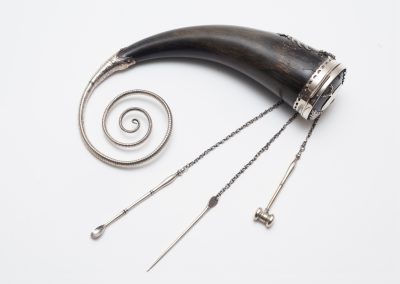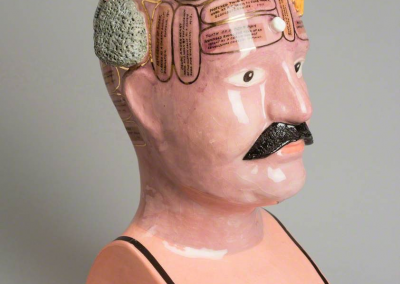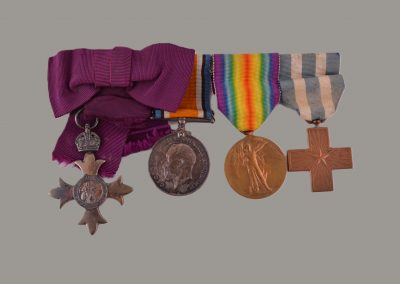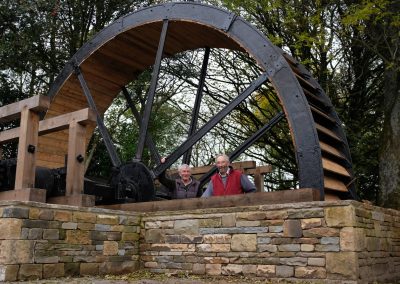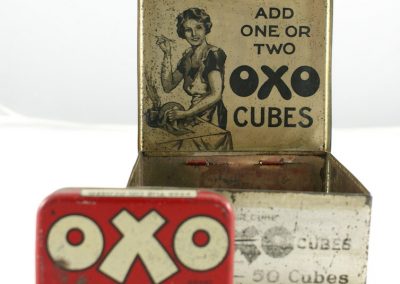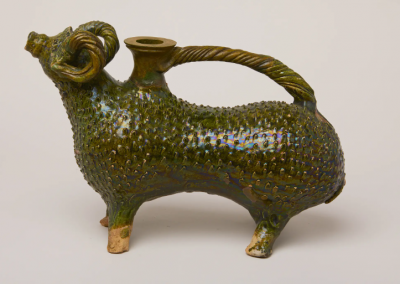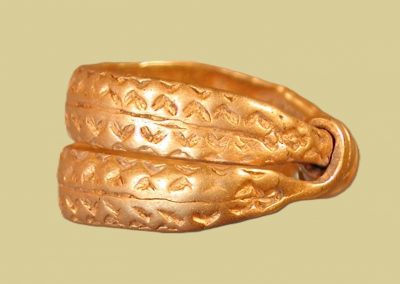Exploring Snuff
Before cigarettes and cigars became popular, many people enjoyed tobacco in the form of snuff, mistakenly thinking it would benefit their health.
This powdered tobacco was sniffed, or ‘snuffed’, up their noses to help clear their heads. it tended to be used by wealthier members of society, whilst the less wealthy smoked their tobacco in clay pipes.
Today many museum collections contain snuff boxes or ‘mulls’, which were used to store it in.
Selection of damaged snuff containers
Ryevitalise Community Dig, Ampleforth
These examples were found during a community dig in Ampleforth. They give us a great example of the sorts of objects that are typically found. ‘Big Digs’ and community digs like this contribute to real archaeological research.
The excavation was part of the wider Ryevitalise Landscape Partnership which helped to uncover evidence of past human activity, shedding light on the history of the area and the lives of those who lived there. By working systematically across an area, creating a series of test pits, archaeologists are able to get a broad chronology of a site and landscape.
You can see from the branding that these three 20th-century snuff packets were produced by Singleton’s. They’re a good example of the way that disposable products like these often end up as litter. In fact, archaeologists often find themselves digging up discarded rubbish! They are a good contrast to more ornate snuff ‘mulls’ which were sometimes carried as status symbols.
Singleton and Cole was a tobacco wholesaler, manufacturer, and importer based in Birmingham. The company traces its origins to a Wolverhampton-based partnership between tobacco manufacturers and brothers-in-law John Singleton and Joseph Cole in 1915.
Activity – Create Your Own
Explore the world of archaeology in more detail.
If you’ve ever wanted to find out more about life as an archaeologist, a really good way is to get involved with an archaeological dig. Community digs around the country often reveal fascinating insights that might otherwise remain hidden.
Find out more in this activity.
Snuff has a long history that starts in the Americas. Indigenous tribes had been using powdered tobacco for centuries before Europeans arrived. When Spanish explorers, like Christopher Columbus, travelled to the Americas in the 1490s, they saw people using tobacco in different ways, including snuffing it. Back in Europe, it became fashionable among the wealthier classes during the 17th and 18th centuries.
The damaging impact of snuff
Because snuff is still from tobacco, which contains nicotine, it is highly addictive. While people thought it had health benefits in the past, we now know that using snuff could cause health problems, especially in the nose and mouth.
Explore more ornate and decorate examples of snuff boxes on the site.
Snuff mull created during captivity
The Highlanders’ Museum, Fort George
This interesting example of a snuff mull shows that they could come in all kinds of designs. This particular example in the collection of The Highlanders’ Museum, based at Fort George, also offers insight into Scotland’s connection to the British Empire.
It was crafted from a silver mace that originally belonged to a Drum Major in the British Army. (A mace was a baton used for conducting a band or for ceremonial purposes.) The piece was repurposed by Private Jock Fraser of the 72nd Regiment while he was held captive during the Xhosa Wars in South Africa in the early 1800s.
These wars, which spanned more than a century, were the longest European colonial conflict, arising from tensions between colonial forces and indigenous South Africans. The wars were pivotal in the British colonial expansion in South Africa, allowing them to establish greater control over the south-eastern regions of the country. However, they are now known to have been devastating for the Xhosa people. For Private Fraser, making this snuff mull would have been a way to occupy his time during captivity.
Snuff box awarded for quelling a riot
Kiplin Hall and Gardens
This is a beautiful George II silver-gilt snuff box, made in London in 1757 by a silversmith with the maker’s mark “E.C.” inside a scalloped oblong. It’s engraved with a Latin inscription around the armorials of Richmond and dedicated to Christopher Crowe, with the name “Chr. Wayne Mayor” also included.
What makes this snuff box particularly interesting is the story behind it. On January 7, 1858, Christopher Crowe the Younger was awarded the Freedom of the Borough of Richmond as a token of gratitude. He is said to have stepped in to calm a riot led by miners from Wensleydale and Swaledale, who were protesting over the high price of corn. His efforts in restoring peace were so appreciated that this elegant box was engraved to commemorate the event.
It’s not known if any steps were taken to support the miners. The Corn Laws, a series of protectionist trade policies, had been repealed in 1846. This led to fluctuations in grain prices. Despite the repeal, the lingering effects of these laws and other economic factors had continued to influence food prices in the following decades.
Snuff container made from ram’s horn
Brora Heritage Centre, Brora
This unusual snuff mull is fashioned out of a ram’s horn. You can read the full story on Museum of the Highlands and also explore the issue of animal rights when making products like this.
Decorated with silver fittings and a silver plate, and encrusted with Cairngorm crystals, it is certainly a very striking design. By turning it into a snuff container, this highly decorative object also took on a functional design.
Lots of museum collections have snuff mulls in their collections. We’ll be buildings up examples so remember to check back to see if there’s an example from a museum near you.
Can you spot any clues on the objects about who might have owned them?
Why do you think people carried snuff boxes instead of larger containers?
How do they compare with modern personal accessories, such as wallets and phone cases?
What materials can you see in these snuff boxes? Why do you think these materials were chosen?
How might giving or receiving a snuff box have been a meaningful gesture in the past?
Why do you think snuff boxes are often found in archaeological digs?
Why do you think some people continue to consume substances that can be damaging to health? What would you tell someone who was considering ‘snuffing’ tobacco?
Which snuff box design do you prefer? Do you think these boxes could be reused now to hold anything different? What would you put in one?
Snuff: A type of finely ground tobacco that people used to sniff up their noses instead of smoking. It was popular in the past, especially in the 17th to 19th centuries.
Status Symbol: an object that shows a person’s wealth, importance, or social position. For example, today an expensive car or a designer handbag might be a status symbol.



Discuss
Do you think an object like a snuff box could become fashionable again? Why or why not?
Why are some people attracted to habits even though they know they aren’t good for them?
Role Play
What would you say to a friend considering trying a substance like snuff? How could you explain its potential damaging impact?
What might their motivations be for trying it and what sorts of arguments might be effective? What sorts of language might annoy them.

Find out more about the ‘Ryevitalise’ project and the Big Dig in Ampleforth on the North York Moors National Park website.
There are lots of ways to get involved in community digs. In nearby Scarborough, the Scarborough Archaeological and Historical Society runs regular excavations and open days.
The Ryevitalise project team worked with DigVentures to make their community dig happen. They run events in lots of places – perhaps there’s one near you.
You can also find out more about becoming a Young Archaeologist.
Another useful website is the Council for British Archaeology.





